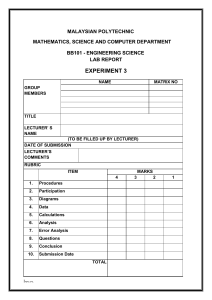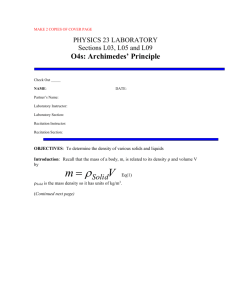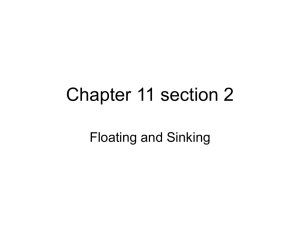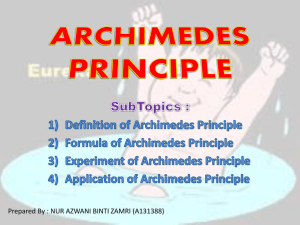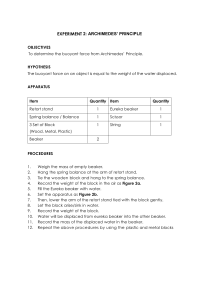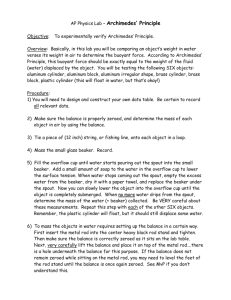click 1
advertisement
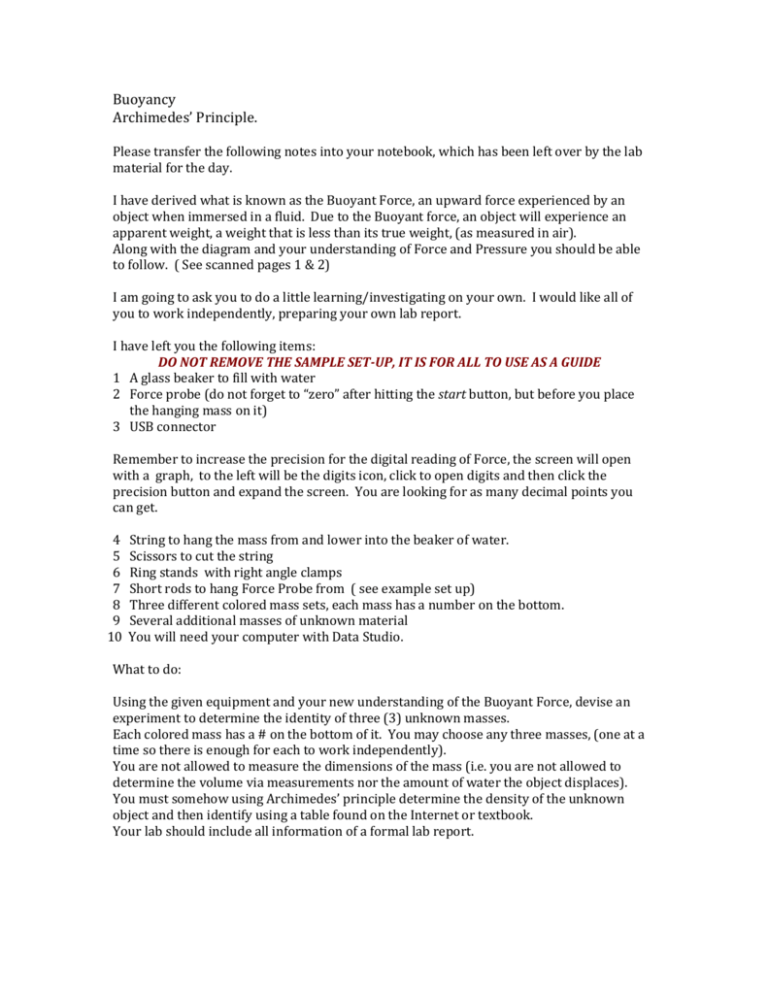
Buoyancy Archimedes’ Principle. Please transfer the following notes into your notebook, which has been left over by the lab material for the day. I have derived what is known as the Buoyant Force, an upward force experienced by an object when immersed in a fluid. Due to the Buoyant force, an object will experience an apparent weight, a weight that is less than its true weight, (as measured in air). Along with the diagram and your understanding of Force and Pressure you should be able to follow. ( See scanned pages 1 & 2) I am going to ask you to do a little learning/investigating on your own. I would like all of you to work independently, preparing your own lab report. I have left you the following items: DO NOT REMOVE THE SAMPLE SET-UP, IT IS FOR ALL TO USE AS A GUIDE 1 A glass beaker to fill with water 2 Force probe (do not forget to “zero” after hitting the start button, but before you place the hanging mass on it) 3 USB connector Remember to increase the precision for the digital reading of Force, the screen will open with a graph, to the left will be the digits icon, click to open digits and then click the precision button and expand the screen. You are looking for as many decimal points you can get. 4 5 6 7 8 9 10 String to hang the mass from and lower into the beaker of water. Scissors to cut the string Ring stands with right angle clamps Short rods to hang Force Probe from ( see example set up) Three different colored mass sets, each mass has a number on the bottom. Several additional masses of unknown material You will need your computer with Data Studio. What to do: Using the given equipment and your new understanding of the Buoyant Force, devise an experiment to determine the identity of three (3) unknown masses. Each colored mass has a # on the bottom of it. You may choose any three masses, (one at a time so there is enough for each to work independently). You are not allowed to measure the dimensions of the mass (i.e. you are not allowed to determine the volume via measurements nor the amount of water the object displaces). You must somehow using Archimedes’ principle determine the density of the unknown object and then identify using a table found on the Internet or textbook. Your lab should include all information of a formal lab report.
